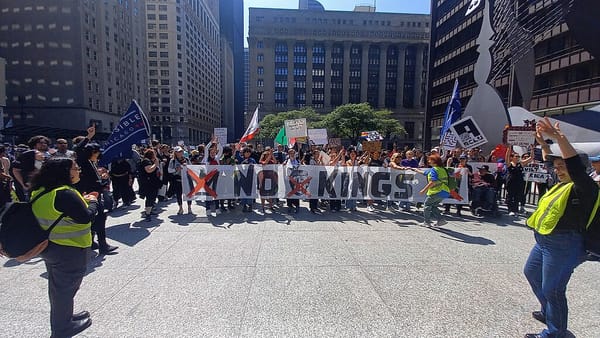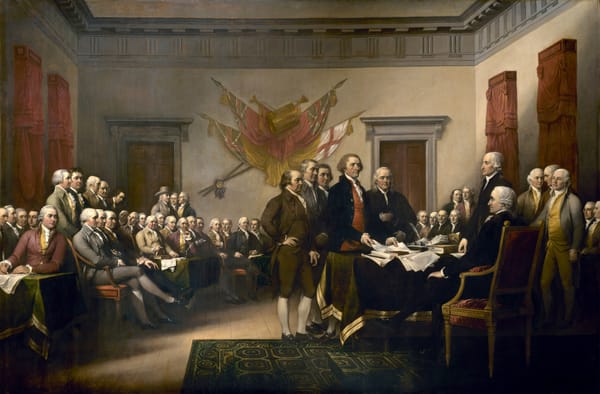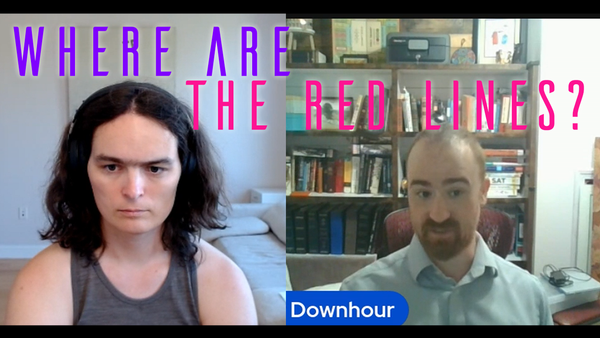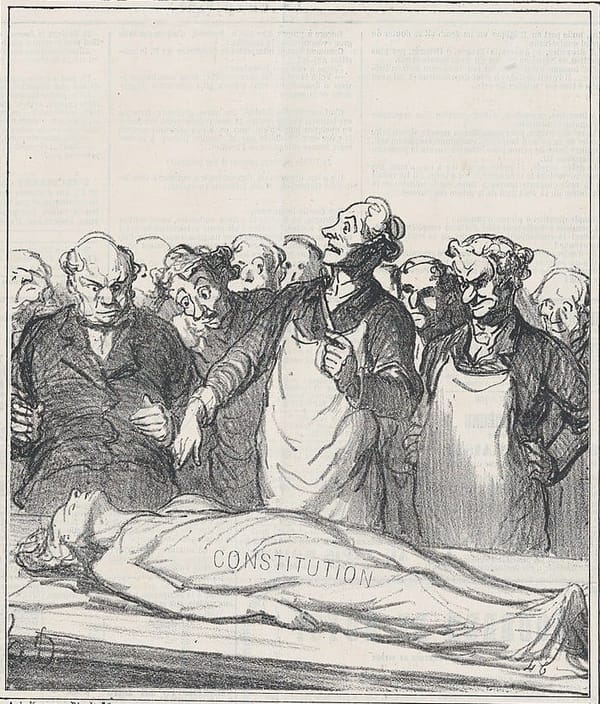Racism With Racists: Systemic Racism Rightly Understood
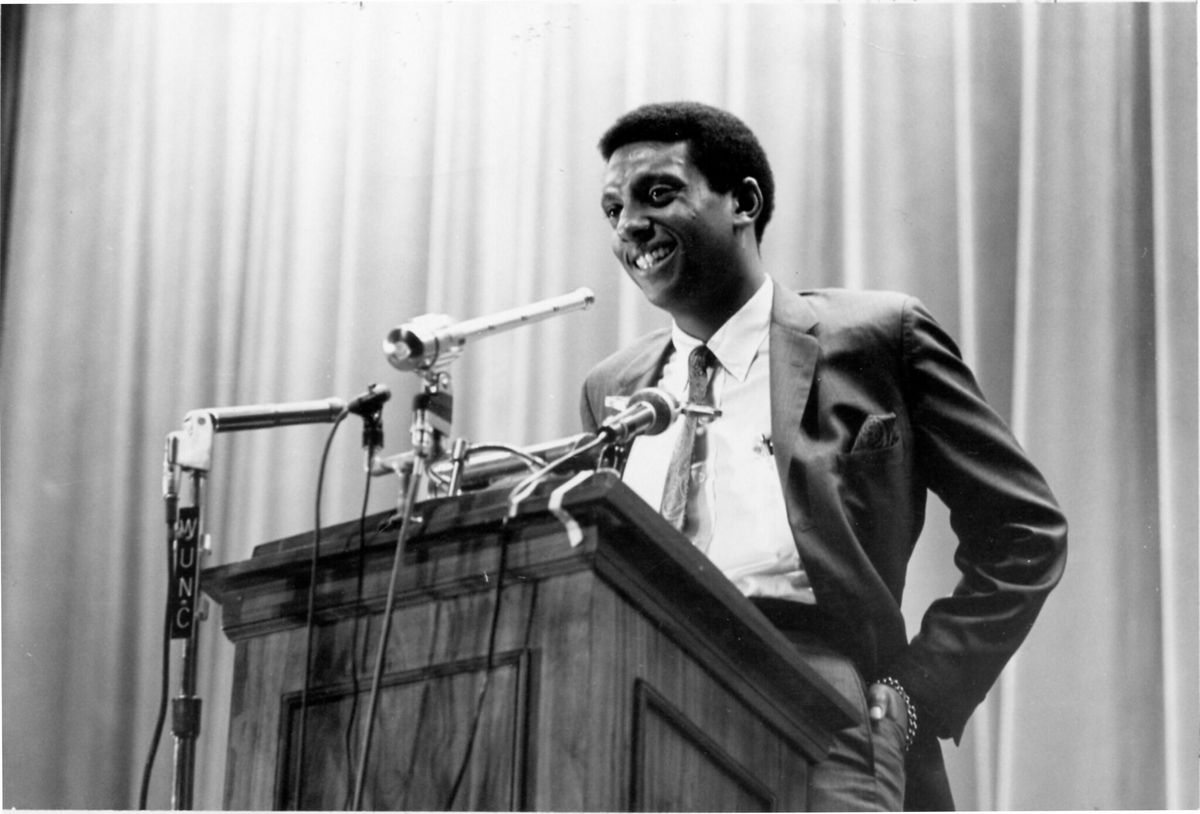
Kwame Ture (formerly Stokely Carmichael), who went from marching with Martin Luther King, Jr. as a member of SNCC to allying with the Black Panther Party, is widely credited with introducing the term “institutional racism.” He first mentioned it in a 1966 article, and, together with political scientist Charles V. Hamilton, gave a thorough account in their 1967 book Black Power.
Their aim was to label a form of racism that was more “covert” than the familiar individual racism of personal prejudice. The same people who condemn acts of individual racism, such as burning crosses on Black families’ lawns, tolerate policies, such as restrictive covenants and redlining, that also to segregate Black residents into worse housing. Ture and Hamilton saw institutional racism as often hidden from view, but no less harmful for that.
Over the past few decades, the introduction of the notion of institutional racism has advanced our understanding in important ways. Crucially, we are better able to grasp and articulate the fact that racist rules, policies, and procedures can persist independently of particular individuals’ attitudes. We can appreciate how there can be racism without racists. And we are in a position to document phenomena, such as the ideological shifts that characterize the post-Civil Rights era, and connect these up to the way that racialized systems of social control have also evolved.
In our current moment, nearly a year-and-a-half after the global protests that erupted following the murder of George Floyd, the discourse centers squarely on the notion of systemic racism. This represents a shift from previous eras, where the conversation focused mainly on individual racists. And it reflects the uptake of the conceptual advance afforded us by the work of thinkers like Ture and Hamilton.
But thinking in terms of institutional or systemic racism has also opened up room for confusion, and this is worrisome because it can hamper antiracist action. In some cases, the apparent confusion may be a mere terminological matter or messaging issue. These are the comparatively easy cases. But things are more serious where we find sloppy thinking that obfuscates what’s going on and how best to respond. This hampers our ability to make progress in combatting the persistent and evolving social ill that is systemic racism. It is, thus, part and parcel of the antiracist program to call it out where we find it.
Typical conflations
Let’s consider two relatively recent discussions of systemic racism, each of which illustrates a different form of confusion. We’ll begin with an instance of the more benign form of confusion just mentioned.
In his 2019 best-seller How to Be an Antiracist, Ibram X. Kendi claims: “‘Institutional racism’ and ‘structural racism’ and ‘systemic racism’ are redundant. Racism itself is institutional, structural, and systemic.” And yet Kendi also warns against becoming “unconscious to racist policymakers and policies as we lash out angrily at the abstract bogeyman of ‘the system.’” Put side-by-side, these statements call out for reconciliation. The claim about redundancy implies that individual racism is no longer with us, while the warning implies that we need to attend to the individual racism of those in positions of power.
Perhaps Kendi’s idea is that individual racism is, indeed, still with us, but it is found (only) in those individuals who pull the levers that keep the system running. Or perhaps his point is meant to be less analytic than pragmatic: the antiracist needs to focus on the system and those in control of it. Maybe he’s saying something else entirely. I’m not sure exactly how to interpret these claims in the context of Kendi’s overall view, but there does seem to be room here to reconcile them.
The same cannot be said for our second example drawn from one of the many “explainers” that have cropped up in response to the recent proliferation of interest in the notion of systemic racism.
What is systemic racism? One popular conception defines it solely in terms of policies, not attitudes. As the Cato Institute’s Michael Tanner puts it: “systemic racism is not about individual intent or behavior, nor even about whether someone is a good person or personally prejudiced.” Unfortunately, this fails as an account of systemic racism because it misrepresents the facts.
Consider Tanner’s own attempts at giving examples of systemic racism in the criminal justice system.
As Radley Balko has amply chronicled, dozens of studies show that the criminal justice system treats African Americans differently throughout the process, from street-level law enforcement, to arrest, to trial, to incarceration. For instance, even though blacks and whites use marijuana at roughly the same rates, African Americans are arrested more than three and a half times as often for marijuana possession. In some states, the arrest rate for African Americans is nearly six times higher. And, of course, black drivers are stopped for pretextual reasons far more often than white drivers. While some have attempted to explain this away by suggesting that blacks speed more often, the disparity mysteriously diminishes at night when police have a harder time determining the driver’s race.
Nor are inequities in the criminal justice system strictly a function of the drug war. For a wide variety of crimes, prosecutors charge black defendants with more severe offenses for the same underlying act. African Americans are sentenced to longer prison terms than whites convicted of the same crime and with similar criminal records. And, once incarcerated, blacks are likely to wait longer for parole.
It’s difficult to see how these examples illustrate what Tanner takes them to. If Black motorists are pulled over more than white motorists only in daylight hours, this is presumably because one can see skin color in the daytime better than at night. So, the explanation of the disparity must have something to do with the intent or behavior of individual officers. Moreover, some of the works Tanner cites belie his account. The reference for Tanner’s claim about racial disparities in marijuana arrests, for example, posits a racialized motive for marijuana laws, in particular, and the drug war, in general. Thus, the very evidence Tanner leverages in support of his definition of systemic racism shows that it cannot be correct.
And the problems with this account of systemic racism go beyond concerns about accuracy. Tanner’s confusion also threatens to undermine efforts at achieving reform. Writing as a Libertarian for a like-minded audience, he advocates for private action based in free-market principles. Putting political ideology to one side, this doesn’t square with how he’s described the problem in the first place. Though he defines systemic racism in a manner that explicitly excludes individual intent and behavior, the evidence he offers in support of this definition only makes sense in terms of the very same. Thus, while he’s correct to note that the government has in the past both been “actively discriminatory” and “served as a barrier to racial equality,” his faith in private citizens appears to be equally unfounded. It was in their capacity as private citizens that crowds gathered to burn crosses on Black families’ lawns, and there’s no reason to think that police officers who profile motorists while on duty leave their biases in the glove compartment with their badge after work. Failure to take these facts seriously threatens to blind us to significant causes of the very problem antiracist action seeks to combat.
Getting antiracism right
A correct grasp of a notion like systemic racism is essential to a proper antiracist response. And yet popular treatments of the subject are poor guides. This goes for directors of well-funded centers as much as it does members of think tanks.
Take, for example, the first step in Kendi’s antiracist program: “Admit racial inequity is a problem of bad policy, not bad people.” This reads as an operationalization of Tanner’s definition of systemic racism. But it sits uneasily with Carmichael and Hamilton’s original characterization of institutional racism in terms of a reliance “on the active and pervasive operation of anti-black attitudes and practices.” More importantly, it’s just a poor guide for antiracist efforts.
Eliminating individual attitudes and personal character from our understanding of racism blinds us to the history of the very systems and structures our antiracist efforts target for change. Institutions don’t build and maintain themselves; people do. And we do so in light of our personally held beliefs and intentions, prejudices included. It is indeed possible for bias to be baked into institutional policy such that it can carry on in the absence of biased individuals. In the context of arrests, for example, the personal bias of the individual police officer making the arrest is often an important explanatory variable.
To eliminate individuals and their psychologies from our understanding of systemic racism is also to discount the evidence of explicit discrimination today. Consider housing and home ownership. We can’t understand the demographics of our neighborhoods without acknowledging the role of individual real estate agents, appraisers, developers, and federal employees in shaping them. And it takes some amount of willful ignorance to fail to acknowledge that the more things change, the more they stay the same.
To be fair, those who, like Kendi, champion a singular focus on systemic racism often appear to recognize the importance of changing minds and attending to who holds the levers of power. The overall narrative frame of his book is one of personal transformation, and he deftly lays out the history of “racist power” and calls for countering it with properly positioned “antiracist power.” But, strangely, he couples this with calls to abandon strategies that focus on moral and educational suasion.
Aside from the question of how this is compatible with his aims in writing a book instructing individual people how to be antiracist, it’s just not clear that the policy changes Kendi calls for are achievable in the absence of efforts to change hearts and minds. This is especially true in a pluralistic democracy. Antiracist policy makers need the support of enough voters to attain and maintain the power necessary to change the system. And it’s not clear how else to do this without making a persuasive case that racist practices are not mere history, perhaps coupled with a moral or political case that this is antithetical to our country’s ideals.
Perhaps what’s going on here is that the talking points—the succinct definitions, numbered steps in a program—don’t adequately capture the more nuanced analysis. This would seem to be the case with Kendi’s book. But the reality is that the talking points are there precisely because they stick in people’s minds. Insofar as they misrepresent the truth, they’re poor guides for action.
Returning to the source
So, where should we look for better answers? For starters, we can go back to the source. In their attempt to uncover the way institutional racism works in this country, Ture and Hamilton attached different labels to different elements. They used “structures” to refer to particular institutions, such as the education sector and law enforcement. They used “systems” to refer to the combination of these structures and the values and beliefs that serve to legitimize them. Institutional racism, they argued, implicates both the complex array of organizations, norms, and laws bedrock to our society and the attitudes and behaviors bound up with them.
One of Ture and Hamilton’s insights was that institutional racism is so pernicious, in part, because it involves a vicious feedback loop between systems and structures. Structural elements contribute to racial disparities in the criminal justice system. But they don’t do so alone. They’re reinforced by ideas that purport to justify them, such as that certain people are criminally suspect just because of their race. These ideas, in turn, are passed on and made to appear true by these very structures. The more the population of actually incarcerated people looks like the racialized criminal stereotype, the more that stereotype appears justified.
Those of us concerned with identifying and combating systemic racism would do well to avoid over-simplified formulations that privilege one explanatory factor at the exclusion of another. To repurpose Tanner’s formulation: systemic racism is not just about individual intent or behavior, but also the structures they infect and the systems that perpetuate them. There is, of course, room for disagreement about how best to understand the interplay between individual character and structural injustice. But we can disagree about which is analytically and practically primary without denying that both are relevant.
Featured Image is Stokely Carmichael, 1967

